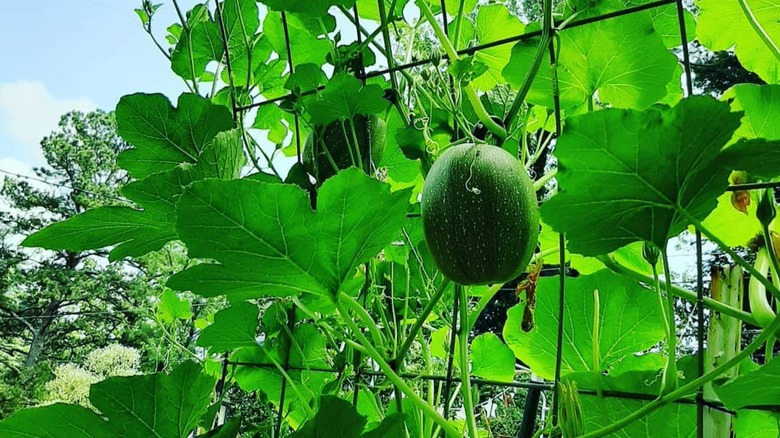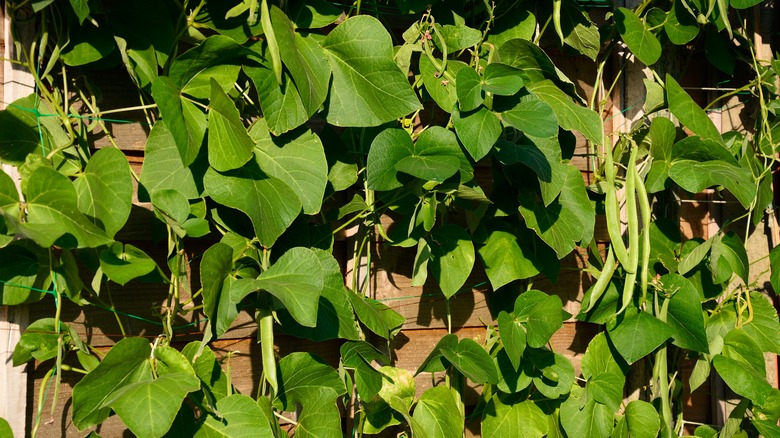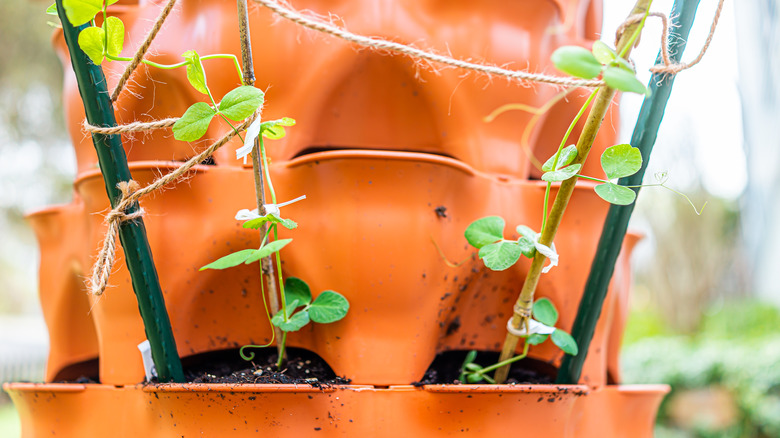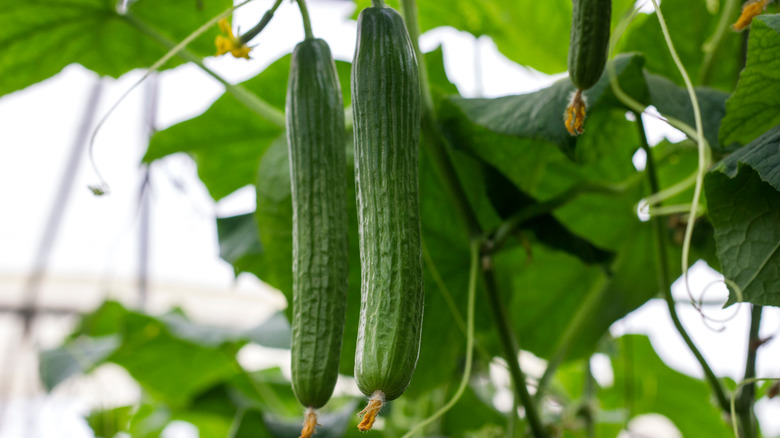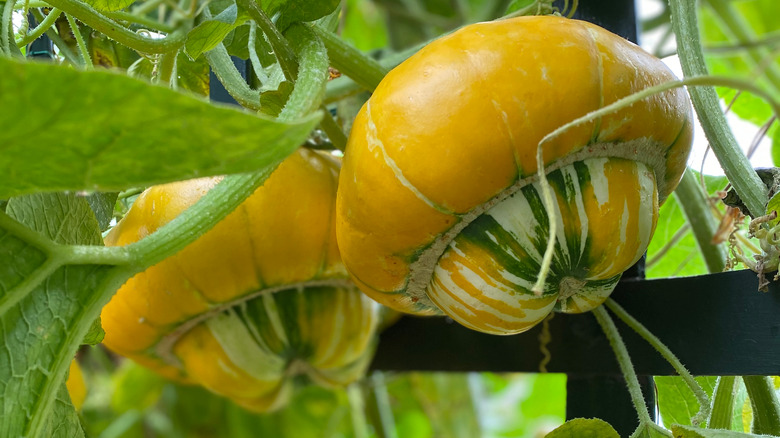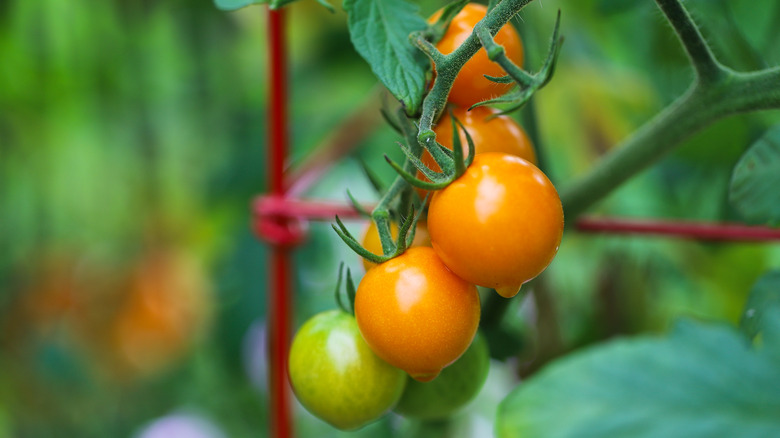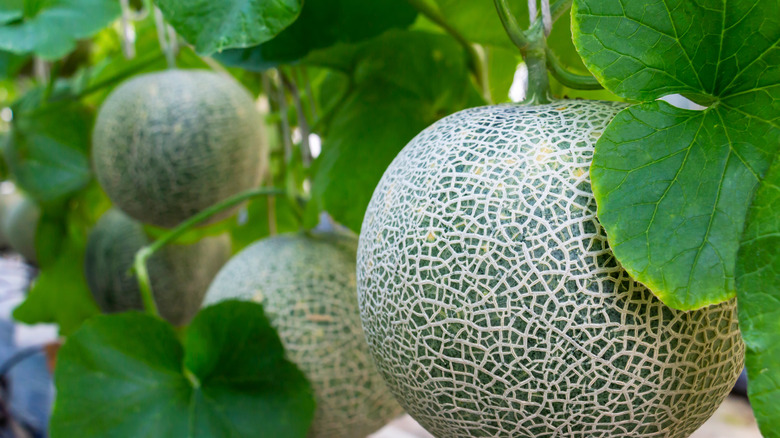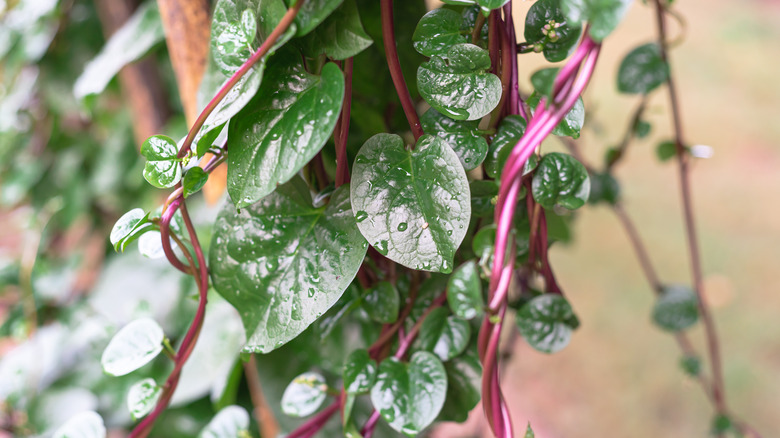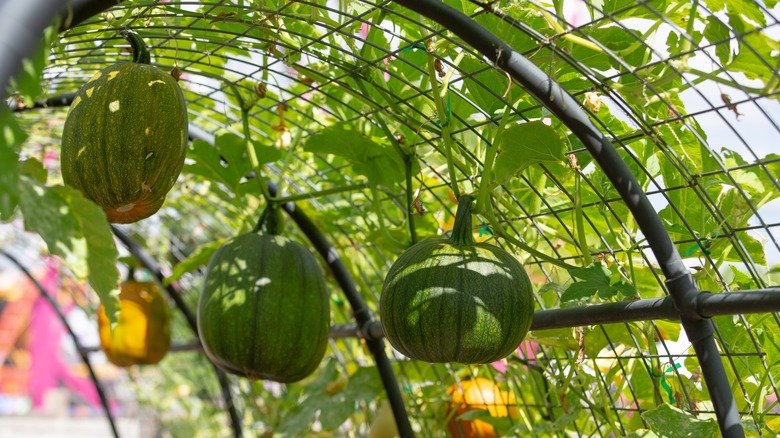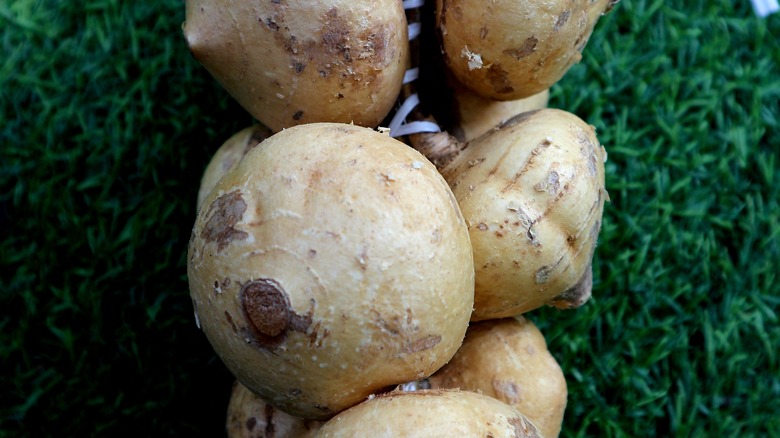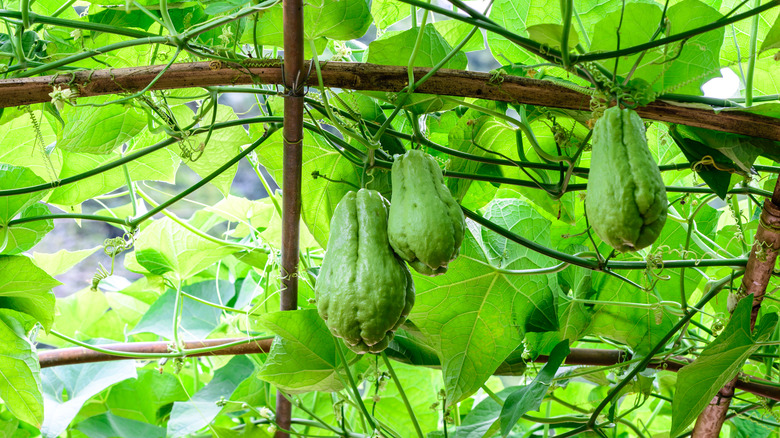10 Vegetables You Should Grow In Your Garden With A Trellis
There are several reasons why growing a healthy garden with a trellis is a good idea. It decreases the chance of soil-borne disease, saves valuable outdoor space that could be used for entertaining, makes for easier harvesting, and can serve a dual purpose by giving you delicious vegetables and beautiful backyard decor. Plus, with so many design options on trellises (from dirt cheap to super pricey), it's a unique way to show off your new plants.
Vertical gardening is definitely the trend right now, with more people seeing the benefits of growing upright. According to horticultural company Grodan, the interest lies in having control over elements like sunlight, water, and soil, so you can best steer the plant in the cleanest and most efficient way. This gives the plant the best chance to grow to its potential, and if growing vegetables, the most delicious and ripe produce to eat. Here we cover the 10 vegetables you should grow in your garden with a trellis and why. Ready for some garden inspiration? Let's get to it!
1. Pole beans
Pole beans (Phaseolus vulgaris) are great climbers, and growing them on a bamboo and twin trellis, according to Seed Savers Exchange, and then harvesting them when they're ready is super easy to do, giving your back a break.
Whether they're green, yellow, or purple, pole beans take a bit longer to mature, which is good as it allows you time to harvest what you need periodically without getting buried in a sea of beans you need to use. Try growing pole beans on an arch trellis for beautiful (but functional) outdoor decor.
Bloom Season: Spring, summer
USDA Growing Zone: 5—11
Growing Conditions: Sunny
Soil Type: Slight acidity to neutral
Size: Up to 12 feet high
2. Peas
A favorite for kids, there are so many different varieties of peas (Pisum sativum) that it makes sense to grow them yourself. Certain peas that grow more than 3 feet should be supported by a trellis, making these easy vegetables to grow in a small outdoor space. Arches and teepees are ideal for this vegetable, as the vines tend to get fairly heavy and need stronger support in order to thrive, according to Gardener's Supply Company. Note that peas need to be harvested pretty frequently, approximately every other day.
Bloom Season: Spring and Summer
USDA Growing Zone: 2—11
Growing Conditions: Full sun
Soil Type: Moist with good drainage
Size: 6—8 feet high
3. Cucumbers
Whether you like them pickled, cocktail-size, or ready to slice into salads, cucumbers (Cucumis sativus) are another family favorite and a great vegetable to grow on a trellis easily and without much work. Make sure to get vining cucumbers, as the bush kind grows a bit differently and the needs vary.
There are many advantages of growing cucumbers on a trellis, including better pollination and easier harvest, according to Gardenary. The other great thing about growing these on a trellis is that it decreases the chance of diseases, which cucumbers are sometimes prone to when grown directly in the soil.
Bloom Season: Summer
USDA Growing Zone: 4—12
Growing Conditions: Full sun
Soil Type: Slight acidity to neutral
Size: 6—8 feet high
4. Squash
Squash (genus Cucurbita) is another vegetable that grows nicely on a trellis, although they aren't the first that comes to mind when thinking of vertical gardening. Don't forget that those beautiful squash flowers when grown in arches can give your outdoor space a pretty pop of color.
They're not natural climbers, so you'll need to wrap the vines to steer them in the right direction, suggests HappySprout. Once you've got them going, though, you'll be able to watch the seedlings grow and harvest some delicious winter or summer squash.
Bloom Season: Late spring, early summer
USDA Growing Zone: 2—11
Growing Conditions: Full sun
Soil Type: Slight acidity to neutral
Size: 1—3 feet high
5. Tomatoes
While tomatoes (Solanum lycopersicum) usually do well without needing a trellis, you can definitely encourage them to grow vertically with a little planning. We suggest getting indeterminate tomatoes, or vining tomatoes, for the greatest success. They're smaller than your regular tomatoes, but that also means they harvest more frequently because they're getting access to more sunlight.
If you need to secure them in place while they grow, we suggest getting some twine to secure them, or purchasing specific tomato clips that are gentle and effective. According to Eartheasy, you can do a vertical trellis, string along a fence, or use stakes to secure.
Bloom Season: Early spring
USDA Growing Zone: 5—8
Growing Conditions: Sunny
Soil Type: Acidic to neutral
Size: Up to 10 feet high
6. Melons
You may think melons (Cucumis melo) are a fruit, but they're actually part of the Cucurbitaceae family, making them a vegetable! You can save some valuable space in your backyard by growing delicious melons vertically.
As you know, melons can get quite big, so a sturdy trellis is needed in order to support them while growing. Getting a sling or a hammock is also a good idea to help support large, mature melons that are ready for harvesting, according to Home Hacks.
Bloom Season: Spring to early Fall
USDA Growing Zone: 4—11
Growing Conditions: Full sun
Soil Type: Rich
Size: 8—20 feet high
7. Spinach
OK, so this isn't the typical spinach you see at the grocery store that's perfect with goat cheese and strawberries. Malabar spinach (Basella alba) is a climbing spinach that has similar leaves and is used in a lot of Indian cuisine.
Malabar spinach is also dual-purpose — meaning it can be harvested for the leaves, but in warm climates, can also turn into a perennial, according to Small Footprint Family. It's also super-easy to maintain and keeps on giving after harvesting.
Bloom Season: Summer and Fall
USDA Growing Zone: 7 and up
Growing Conditions: Full sun
Soil Type: Sandy and loamy
Size: 6—10 feet high
8. Pumpkins
Similar to melons, pumpkins (genus Cucurbita) can definitely be grown vertically, but need support systems like a sturdy trellis and hammocks in order to thrive. They also need a lot more watering than you may think, but the results are well worth it, according to AgriLife Today.
There are tons of varieties to choose from, with the most popular being on the smaller side like Baby Boo or Jack Be Little. Not only are those more manageable when growing, but they are more easily harvested when grown vertically. The best part is that you have instant fall decor if the timing is right!
Bloom Season: Early Summer
USDA Growing Zone: 3—7
Growing Conditions: Full sun
Soil Type: Sandy high in organic matter
Size: 4—16 feet high
9. Jícama
Jícama (Pachyrhizus erosus) is a root vegetable native to Mexico and Central America that has a great crunch and is often used in salads (we love a watermelon salad with feta) and is also known as yam bean, according to CC GROW.
It's also a great climbing vegetable that can thrive well when grown vertically. It needs as much sun as possible and can grow up to 150 feet long, making it a great multi-purpose vegetable that can add shade to a porch, arch, or shed through the summer.
Bloom Season: Summer
USDA Growing Zone: 10—12
Growing Conditions: Full sun
Soil Type: Warm, well-drained
Size: 15—20 feet high
10. Chayote
Chayote (Sechium edule) is part of the squash family and is also native to Mexico. It resembles a cucumber or small pear because of its shape (often called pear vegetable for that reason), according to Harvest to Table.
It's great steamed or boiled and has a subtle flavor used in many traditional Mexican dishes. They're easy to grow on a trellis, pests seem to leave it alone, and can be harvested for the long run, making chayote a unique pick for your vegetable vertical garden.
Bloom Season: Summer
USDA Growing Zone: 7—8
Growing Conditions: Full sun
Soil Type: Loose and well-drained
Size: Up to 50 feet high
